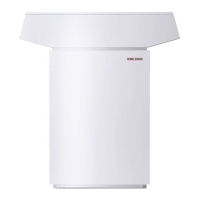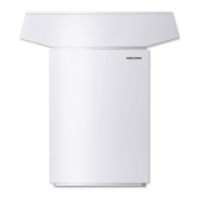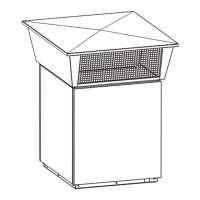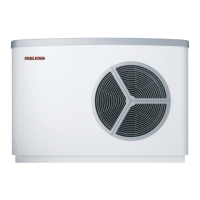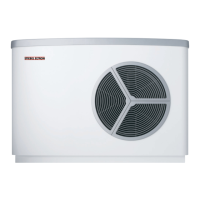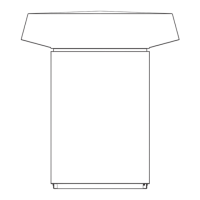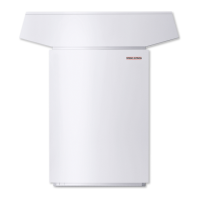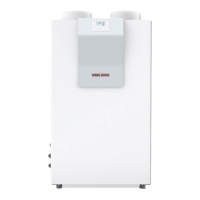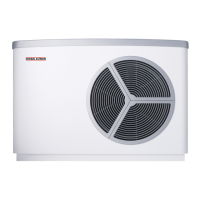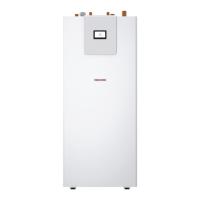WWW.STIEBEL-ELTRON.COM WPL E | WPL COOL| 13
INSTALLATION
APPLIANCE INSTALLATION
10.3 Heating water connection
!
Damage to the appliance and environment
The heating system to which the heat pump is connected
must be installed by a qualified contractor in accordance
with the water installation drawings that are part of the
technical guides.
Thoroughly flush the pipework before connecting the heat
pump. Debris, such as rust, sand or sealant can impair the
operational reliability of the heat pump.
Connect the heat pump on the heating water side. Check for
tightness.
Connect the flexible pressure hoses to the connectors.
The pressure hoses must be at least 1 metre long.
Structure-borne noise is largely prevented by the anti-vibration
construction of the heat pump and by the flexible pressure hoses,
which act as anti-vibration mounts.
10.3.1 Oxygen diffusion
!
Damage to the appliance and environment
In underfloor heating systems with plastic pipes that are
permeable to oxygen, avoid open vented heating systems
or steel pipework.
With permeable plastic underfloor heating system pipes or open
vented heating systems, oxygen diffusion can cause corrosion of
steel components if steel radiators or steel pipes are used.
The products of corrosion, e.g. rusty sludge, can settle inside the
heat pump condenser and can result in loss of output through
reduction of the cross-section, or in a heat pump shutdown.
10.4 Second heat source
For dual mode systems, always connect the heat pump into the
return of the second external heat source, e.g. oil boiler.
10.5 Filling the heating system
10.5.1 Water quality
A fill water analysis must be available prior to charging the sys-
tem. This may, for example, be requested from the relevant water
supply utility.
!
Material losses
To avoid damage as a result of scaling, it may be neces-
sary to soften or desalinate the fill water. The fill water
limits specified in chapter "Specification / Data table"
must always be observed.
Recheck these limits 8-12 weeks after commission-
ing and as part of annual system maintenance.
Note
With conductivity of >1000μS/cm, desalination treatment
is recommended in order to avoid corrosion.
Note
Suitable appliances for water softening and desalinating,
as well as for charging and flushing heating systems, can
be obtained via trade suppliers.
Note
If you treat the fill water with inhibitors or additives, the
same limits as for desalination apply.
10.5.2 Filling the heating system
26�03�01�0958�
1
1 Drain
Fill the heating system via the drain.
After filling the heating system, check the connections for
tightness (visual and physical inspection).
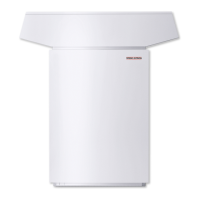
